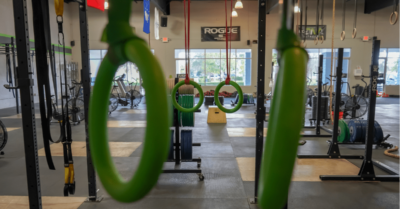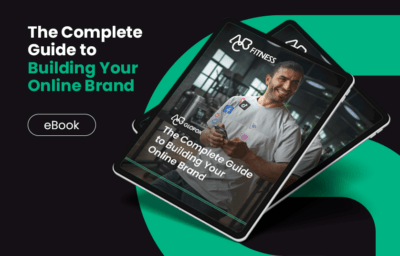Is owning a gym profitable?
Owning a gym can be a very profitable business venture, but there are several things you need to take into account before making the decision to open your own gym.
A Statista survey in November 2020 reported that 68% of gyms that had been open for more than eight years were profitable. That number dropped to 52% for gyms that were open for less than three years. In other words, owning a gym can be profitable but it may take some time
In this blog post, we will discuss whether owning a gym is profitable and what you need to do in every area of your business to make your gym profitable – all using proven and practical strategies from fitness business experts.
Skip ahead to:
The reality about owning a gym
Anyone who has ever thought about owning a gym has likely fantasized about the potential profits. After all, there is a large and growing market for fitness services. However, it is important to be realistic about the work involved in running a gym. Before you hire any staff, you will likely be doing most of the work yourself.
This includes everything from cleaning and maintenance to customer service and marketing. In addition, you can expect to work long hours, often including early mornings and late nights. While owning a gym can be profitable, it is not a get-rich-quick scheme. Those who are successful in this business are those who are willing to put in the hard work.
So how can a gym make a profit in such an oversaturated market?
The answer comes down to 3 crucial areas you need to map out as a business revolving around your operations, finances, and member retention.
Effective operations
Having effective operations in place is crucial for knowing where your business is now and where it will be in the future. Getting this running efficiently in every area of the business can often seem overwhelming, but there are always ways you can strengthen your processes, and that’s the first point we’ll explore.
Know where you can improve
Eric Killian joined us on The Fitness Founders Podcast. Eric is a Certified Public Accountant and the founder of The Fitness CPA, an accountancy firm specializing in finance for fitness businesses, based in Colorado. During the episode, Eric talked to us about how efficient operations can help you grow and succeed.
From his experience, Eric has seen many gym owners succeed by knowing where they need to improve, and most importantly, acting on it. It’s no good knowing that your churn rate is bad if you’re not going to do something to change it.
Break down what financial operations are working well for your business and the areas that could be improved. For the problem areas, you’ll need to ask yourself two key questions:
- What’s causing this problem?
- Do I know what needs to be done to fix it?
If the answer is yes: You know what needs to change, so take action. Map out a journey of the steps you will take to improve this area of the business. Lay out a plan where you have to take one action a week to progress to the next step. Once it’s done, measure the impact that step has had before moving on to the next. As you go through this process, you’ll learn what works and what doesn’t – until you find a balance that delivers a solution.
If the answer is no: You need to find someone who does. It could be a mentor, someone who’s been in your position before, or maybe you’ll choose to outsource a consultant. By being proactive with the right approach and the right people, finding the right solution becomes a lot easier. As Eric says; Now is the time to say, “I’m committed to making this work.”
“I’ve seen some really awesome owners get the right coaching and I’ve seen them work with consultants. I’ve seen them get their finances in order and I’ve seen them work with their franchise. I’ve seen them partner with other fitness concepts in their community and turn their brands around, and you can do this.”
Know your now, plan for your future
No one knows what the future holds, and this is more true now as we navigate the uncertainty of the pandemic. With this, it’s essential that you can physically see where each area of your business is now, so you can prepare for both the best and worst-case scenarios. We’ve outlined a few questions below that will get you thinking in the right direction.
- What’s your current churn rate?
- Looking back at retention and churn rates from the first time you had to close your gym this year, can you predict a worst-case outcome if you have to close again?
- How can you preempt this and act to improve it the next time?
- What’s your cash-flow like now?
- How will these considerations impact your cash-flow over the coming months?
You’ll need to answer questions like this to plan for the future financially – we’ll go into understanding the finances of your business in more detail in the next section.
Financial planning
To be profitable, a gym owner needs to have a comprehensive overview of what their finances look like – both now and what they may look like in the future.
In episode 23 of The Fitness Founders Podcast, we spoke with Andrea Hovel, co-owner of Healthier Bookkeeping, an accounting company that works explicitly with fitness businesses.
The Top 10 Barriers
Slowing Your Fitness
Business Growth
Discover more Andrea shared expert insights on how to avoid financial pitfalls and the three key financial statements you need to understand in business: The balance sheet, profit, and loss statement, and the cash flow statement. Once you grasp these, you’ll see where you need to adjust in the future. Each one is quite straightforward to understand, so we’ll give a quick overview:
- The Balance Sheet: an overview of how your business is currently performing. It’s what you own, what you owe, and anything leftover. This statement shows your overall growth.
- Profit and Loss Statement: outlines what your business earns vs. its spending and will highlight what cash your business generates each month.
- Cash Flow Statement: similar to your profit and loss statement, but includes other expenses, including tax payments and staff wages.
When you understand how your business is performing at a high level, you can then take steps to address problem areas and ensure you’re financially secure and making a profit. Though this is easier said than done during COVID-19, it’s also an excellent time to reassess how you can drive additional revenue for your business. It’s likely that this year you’ve pivoted to provide online services to members – but that’s not what this section is about. We’re talking about additional revenue outside of your online/in-person memberships, and for this, you’ll need to get creative.
Here are two simple ideas to inspire you.
Leverage your online store
You can upload and sell anything you like on your website; it doesn’t just have to be memberships! Think along the lines of e-cookbooks and meal plans, online courses, and equipment bundles. We’ve outlined a simple example below:
The Full-Body Bundle
Adjustable equipment you can use for a variety of movements for a total-body burn.
This bundle includes:
- Weight Adjustable Kettlebell
- Skipping Rope
- Mat
- Ab Roller
- Set of 4 Rubber Resistance Bands
You can also sell each of the items separately and offer different bundles at a price that works out less than purchasing individually – doing this creates a true sense of the bundle’s value.
Create value and upsell
Uber Shape Australia is a great example of how you can drive additional revenue and increase retention at the same time. The business has mastered the art of the upsell with its 8-week challenge, which is sold through the gym’s online store, making it an easy purchase for members.
“I use the store for the 8-week challenge. Members will go straight in and “buy now” because it’s easy.”
The latest run of the challenge had a 100% retention rate from start to finish, which brings us on to the final section on what makes, and keeps a gym profitable.
Member retention
In the fitness industry, acquisition is important, getting new leads is great, and turning those leads into members is even better. But what’s much more crucial to your gyms’ success is keeping them. Membership fees form the base of your revenue and ultimately impact your profit.
Much like when you’re operating business as usual at your physical studio, the online fitness market is competitive. And now more than ever, it’s crucial to remember what sets your gym apart from the rest:
Accountability
When it comes to your members, you understand what motivates them, and that’s not something they’ll get from an Instagram Live workout with a random influencer. At LadyStrong Fitness, founder and owner Brittany Welk took her studio online and retained 100% of her members in the process.
A key focus for LadyStrong is making sure that members continue making the same progress at home, and Brittany dedicates time to making sure this goes beyond the workouts alone. The studio calls its members every day to check in on them and keep them on track.
Personalization
To motivate and engage your members, you need to get personal. 63% of today’s consumers expect personalization as a standard of service, and 54% are willing to share personal information if it’s used to create a personalized experience. It’s an important aspect of keeping retention rates up and provides several benefits to both your business and your members:
- Better quality lead generation for acquiring new customers
- Increased brand advocacy
- Happy, motivated members
Onboarding
We were recently joined by Dr. Paul Bedford on The Fitness Founders Podcast. Paul is an industry-leading expert on retention and the owner of Retention Guru, which helps independent gyms and larger international franchises with their retention strategies.
During the episode, he talks about the fundamentals of a great retention strategy, creating an engaging customer experience in a virtual setting, and the key to implementing change across multiple location franchises. One of the most interesting areas that Paul discusses is onboarding, referencing his landmark study, One Million Strong: An In-Depth Study of Member Retention in North America. One of the key findings from the study is that 87% of members onboarded correctly still remained active after 6 months.
If your members have a great experience right from the start, they are more likely to stay loyal for longer.
In summary
Running a profitable gym will not always be easy. But with efficient operations and a clear overview of your finances – you will always be in the best position to improve. Member retention remains a key area of focus, not just for profitability, but growth and long-term success.















